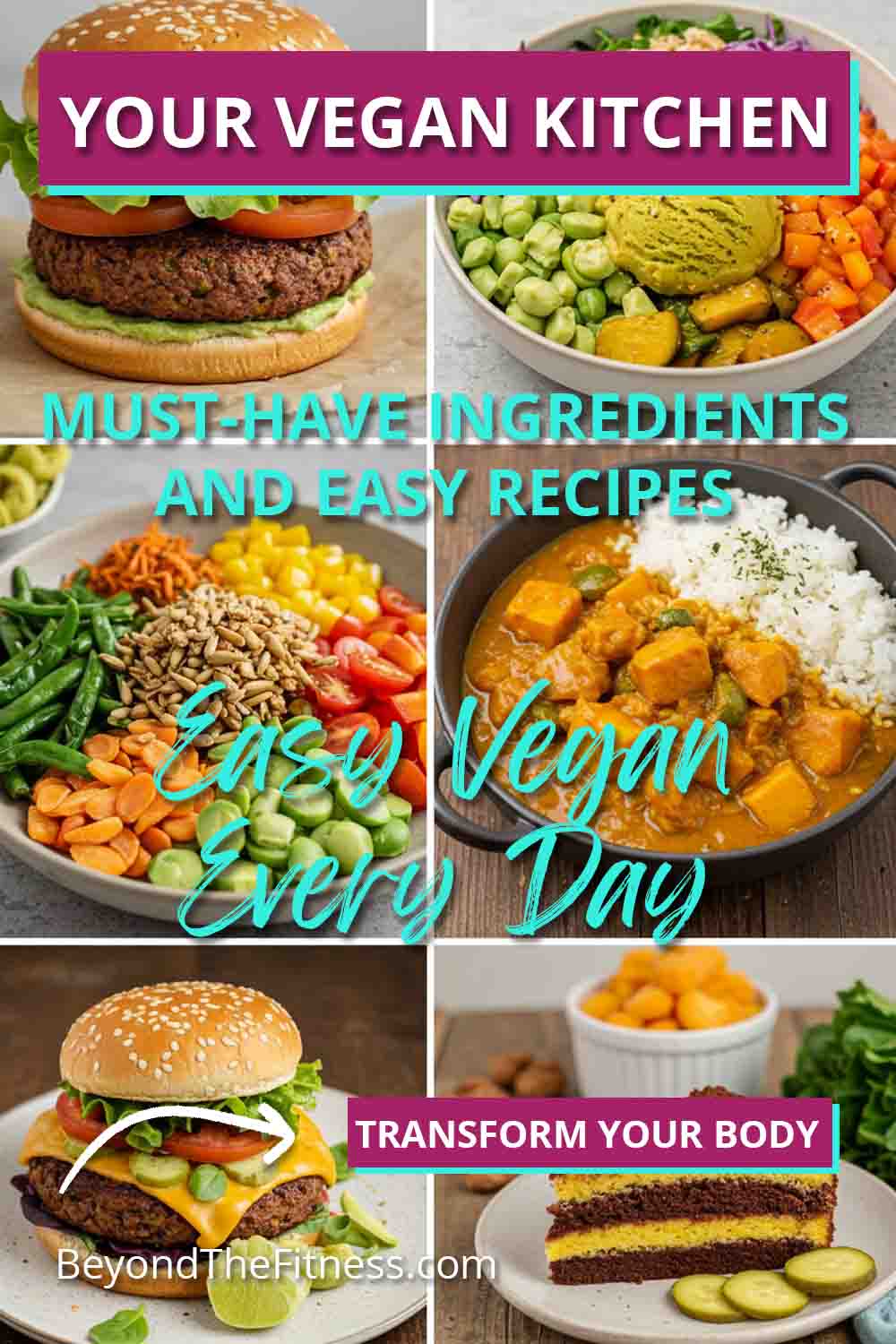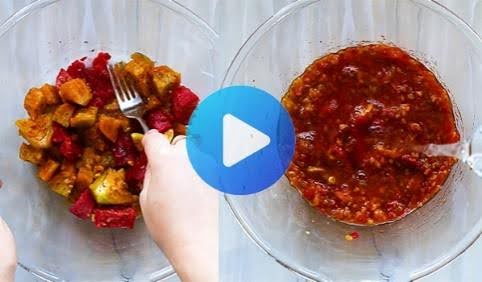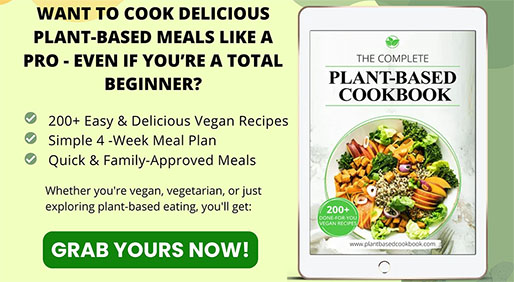Setting up your kitchen for vegan eating might seem like a big step, but I promise it’s easier than you think. It’s really about shifting focus and stocking up on some amazing plant-based staples. As someone who helps people, especially women, reach their health and fitness goals, I see plant-based eating as a powerful tool. It can support weight management, boost energy levels, and provide the nutrients your body needs to thrive, whether you’re training for a marathon or just aiming for a healthier lifestyle. Let’s explore how to build your vegan kitchen from the ground up.
Why Consider a Plant-Powered Kitchen?
Switching to more plant-based meals isn’t just about following a trend. For many women I work with, it becomes a pathway to better understanding their bodies and nutrition. Plant foods are naturally rich in fiber, which is fantastic for digestion and helps you feel full and satisfied. This feeling of fullness can be really helpful if you’re managing your weight. Think about it – foods packed with fiber, water, and nutrients tend to have fewer calories for their volume compared to highly processed options.
Beyond weight management, a well-stocked vegan kitchen provides the building blocks for energy and recovery. Complex carbohydrates from whole grains fuel your workouts. Plant-based proteins help repair and build muscle tissue after exercise. The vitamins, minerals, and antioxidants abundant in fruits, vegetables, nuts, and seeds help fight inflammation and support overall cellular health. It’s about nourishing your body effectively so you feel strong and vibrant.
Insider Tip: Enjoying Healthy and Flavorful Plant-Based Dishes with The Complete Plant Based Recipe Cookbook
Stocking Your Vegan Pantry: The Essentials
Creating a functional vegan kitchen starts with the pantry. Having these staples on hand makes whipping up healthy meals much simpler, even on busy weeknights.
1. Legumes: The Protein Powerhouses
Legumes are absolute stars in a vegan diet. They are inexpensive, versatile, and packed with protein and fiber.
- Lentils (Brown, Green, Red): Red lentils cook quickly and break down, making them great for soups and curries. Brown and green lentils hold their shape better and are perfect for salads, stews, and veggie burgers. Lentils are a fantastic source of iron, which is crucial for energy levels, especially for active women.
- Chickpeas (Garbanzo Beans): Hummus, anyone? Chickpeas are also wonderful roasted for a crunchy snack, added to salads, or mashed into veggie patties. They provide a good amount of protein and fiber, contributing to satiety.
- Beans (Black, Kidney, Pinto, White): Beans are incredibly versatile. Use them in chili, tacos, burritos, soups, salads, and dips. They offer complex carbohydrates for sustained energy, along with protein and essential minerals like potassium and magnesium. Rinsing canned beans well helps reduce sodium.
I recommend keeping both dried and canned legumes on hand. Dried legumes are cheaper but require soaking and longer cooking. Canned are convenient for quick meals.
2. Whole Grains: Fueling Your Body
Whole grains provide complex carbohydrates, fiber, and essential nutrients. They release energy slowly, keeping you fueled for longer periods, which is ideal for sustained energy during workouts and throughout the day.
- Oats (Rolled, Steel-Cut): Perfect for breakfast porridge, overnight oats, homemade granola, or adding to smoothies and baked goods. Oats contain beta-glucan, a type of soluble fiber linked to heart health.
- Quinoa: A complete protein, meaning it contains all nine essential amino acids. Quinoa cooks quickly and has a fluffy texture. Use it as a base for bowls, in salads, or as a side dish instead of rice.
- Brown Rice: A pantry staple that offers more fiber and nutrients than white rice. It’s great in stir-fries, bowls, and alongside curries.
- Whole Wheat Pasta: Choose whole wheat pasta for extra fiber compared to regular white pasta. It pairs well with all sorts of vegan sauces.
- Other Grains: Explore options like barley, farro, bulgur, or whole wheat bread and tortillas. Variety is key.
3. Nuts and Seeds: Tiny Nutritional Giants
Nuts and seeds are sources of healthy fats, protein, fiber, vitamins, and minerals. They add texture, flavor, and a significant nutritional boost to meals and snacks.
- Almonds: Great for snacking, adding to oatmeal, or using as almond butter. They provide vitamin E, magnesium, and calcium.
- Walnuts: One of the best plant sources of omega-3 fatty acids (ALA), which are important for brain health and reducing inflammation. Add them to salads, oatmeal, or baked goods.
- Chia Seeds: These tiny seeds are packed with fiber, omega-3s, protein, and calcium. They form a gel when mixed with liquid, making them perfect for puddings, thickening smoothies, or as an egg replacer in baking.
- Flaxseeds (Ground): Another excellent source of omega-3s and fiber. It’s best to use ground flaxseed (or grind them yourself) as the whole seeds can pass through undigested. Sprinkle on cereals, blend into smoothies, or use as an egg replacer (flax egg).
- Pumpkin Seeds (Pepitas): A good source of magnesium, iron, zinc, and protein. Eat them raw, roasted, or sprinkle on salads and soups.
- Nut Butters: Peanut butter, almond butter, cashew butter – choose natural varieties without added sugar or oils. Great on toast, with fruit, or in sauces and smoothies.
4. Fruits and Vegetables: Color Your Plate
This is where you get a huge array of vitamins, minerals, antioxidants, and fiber. Aim for variety and lots of color.
- Fresh: Keep staples like onions, garlic, potatoes, sweet potatoes, carrots, and seasonal produce on hand. Leafy greens (spinach, kale, lettuce), bell peppers, tomatoes, broccoli, cauliflower, zucchini, and berries are fantastic additions.
- Frozen: Frozen fruits (berries, mango, pineapple) are perfect for smoothies. Frozen vegetables (peas, corn, spinach, broccoli florets, mixed veggies) are just as nutritious as fresh and are incredibly convenient for quick meals like stir-fries or adding to soups. They last much longer too.
- Canned: Canned tomatoes (diced, crushed, paste) are essential for sauces, soups, and stews.
Focusing on a variety of fruits and vegetables helps ensure you get a wide range of micronutrients, which support everything from immune function to post-exercise recovery.
5. Plant-Based Milks: Dairy-Free Delights
There are many options available now. Use them just like you would dairy milk – in cereal, coffee, tea, smoothies, baking, and cooking.
- Soy Milk: Often highest in protein and usually fortified with calcium and vitamin D. It has a creamy texture.
- Almond Milk: Lower in calories and protein but often fortified. It has a mild flavor.
- Oat Milk: Creamy and slightly sweet, great in coffee and cereals. Often fortified.
- Coconut Milk (Carton vs. Canned): The kind in the carton is a beverage similar to other plant milks. Canned coconut milk (full-fat or light) is much thicker and richer, used primarily in cooking, especially curries and desserts.
Look for unsweetened and fortified versions whenever possible to get added calcium and vitamin D, which are important for bone health.
6. Tofu, Tempeh, and Seitan: Versatile Proteins
These are excellent meat alternatives that absorb flavors well.
- Tofu: Made from soybeans, tofu comes in various firmness levels (silken, soft, firm, extra-firm). Silken tofu is good for smoothies, sauces, and desserts. Firm and extra-firm tofu are great for baking, grilling, frying, scrambling, or adding to stir-fries. Pressing firm or extra-firm tofu removes excess water, allowing it to absorb marinades better and achieve a crispier texture.
- Tempeh: Made from fermented soybeans, tempeh has a firmer, chewier texture and a nutty flavor. It’s great crumbled, cubed, or sliced and can be steamed, baked, or fried. It’s also a good source of probiotics due to the fermentation process.
- Seitan: Made from wheat gluten, seitan has a very meaty texture. It’s high in protein but not suitable for those with gluten intolerance or celiac disease. It works well in stews, sandwiches, or as mock meat.
7. Healthy Fats: Flavor and Function
Fats are essential for hormone production, nutrient absorption, and overall health.
- Avocado: Creamy and delicious, providing healthy monounsaturated fats, fiber, and potassium. Great on toast, in salads, smoothies, or as a base for dips.
- Olive Oil (Extra Virgin): Ideal for salad dressings and low-to-medium heat cooking. Rich in monounsaturated fats and antioxidants.
- Coconut Oil: Good for medium-to-high heat cooking. Contains medium-chain triglycerides (MCTs). Use in moderation.
- Other Oils: Avocado oil (high heat cooking), sesame oil (flavoring, especially in Asian dishes).
8. Natural Sweeteners: Use Sparingly
While it’s best to limit added sugars, sometimes you need a touch of sweetness.
- Maple Syrup: A natural liquid sweetener great for pancakes, oatmeal, and baking.
- Agave Nectar: Sweeter than sugar, so you can use less. Mild flavor.
- Date Paste/Syrup: Made from dates, providing some fiber and minerals along with sweetness. You can easily make date paste at home by blending soaked dates.
- Molasses (Blackstrap): A byproduct of sugar refining, blackstrap molasses is less sweet but contains iron and calcium.
9. Herbs, Spices, and Flavor Boosters: The Magic Touch
This category is crucial for making vegan food taste amazing.
- Nutritional Yeast (“Nooch”): Deactivated yeast with a cheesy, nutty flavor. It’s often fortified with B vitamins, including B12 (check the label). Sprinkle it on popcorn, pasta, tofu scrambles, or use it to make vegan cheese sauces.
- Soy Sauce / Tamari / Coconut Aminos: Provide salty, umami flavor. Tamari is typically gluten-free. Coconut aminos are a soy-free, gluten-free alternative with a slightly sweeter taste.
- Vinegars: Apple cider vinegar, balsamic vinegar, red wine vinegar – add acidity and brightness to dressings, marinades, and sauces.
- Vegetable Broth/Stock: Essential base for soups, stews, and cooking grains like quinoa or rice for extra flavor. Look for low-sodium options.
- Herbs (Fresh and Dried): Basil, parsley, cilantro, oregano, thyme, rosemary. Dried herbs are convenient pantry staples, while fresh herbs add vibrant flavor.
- Spices: Cumin, coriander, paprika (sweet, smoked), chili powder, turmeric (anti-inflammatory properties), cinnamon, ginger, garlic powder, onion powder. A well-stocked spice rack is your best friend.
- Mustard (Dijon, Yellow): Adds tang to dressings and sauces.
- Tomato Paste: Concentrated tomato flavor, great for deepening sauces and stews.
- Miso Paste: Fermented soybean paste providing savory umami depth, especially good in soups and dressings.
Essential Kitchen Tools for Vegan Cooking
You don’t need fancy gadgets, but a few basics make life easier:
- Good Chef’s Knife and Cutting Board: Essential for chopping all those vegetables.
- Pots and Pans: A small saucepan, a larger pot for pasta/soups, and a skillet or frying pan.
- Blender: Useful for smoothies, creamy soups, sauces, and dressings. A high-speed blender is great but not essential to start.
- Food Processor (Optional but helpful): Great for making hummus, veggie burgers, processing nuts, and chopping vegetables quickly.
- Measuring Cups and Spoons: For accurate recipe following.
- Mixing Bowls: Various sizes are useful.
- Baking Sheet: For roasting vegetables, baking tofu, etc.
Easy Vegan Recipes to Get You Started
Here are some simple recipes using many of the staples we’ve discussed. These are designed to be quick, nutritious, and satisfying – perfect for fueling an active lifestyle.
1. Speedy Berry Oatmeal
A classic breakfast that provides sustained energy.
- Ingredients:
- 1/2 cup rolled oats
- 1 cup plant-based milk or water
- Pinch of salt
- 1/2 cup frozen berries
- 1 tablespoon chia seeds or ground flaxseed
- 1 tablespoon chopped nuts (almonds, walnuts) or seeds (pumpkin seeds)
- Optional: 1 teaspoon maple syrup or other sweetener
- Instructions:
- Combine oats, plant-based milk or water, and salt in a small saucepan.
- Bring to a simmer over medium heat, then reduce heat to low.
- Cook, stirring occasionally, for 5-7 minutes, or until creamy.
- Stir in the frozen berries during the last couple of minutes of cooking (they will thaw and warm through).
- Remove from heat and stir in the chia seeds or flaxseed.
- Pour into a bowl and top with chopped nuts/seeds and sweetener, if using.
- Fitness Note: This breakfast provides complex carbs for energy, fiber for fullness, and protein/healthy fats from the nuts/seeds for satiety and nutrient absorption.
2. Simple Tofu Scramble
A high-protein alternative to scrambled eggs.
- Ingredients:
- 1 tablespoon olive oil
- 1/2 block (about 7 oz or 200g) extra-firm tofu, pressed and crumbled
- 1/4 cup chopped onion
- 1/4 cup chopped bell pepper (any color)
- 1/4 teaspoon turmeric (for color and health benefits)
- 1 tablespoon nutritional yeast
- Salt and black pepper to taste
- Optional: handful of spinach
- Instructions:
- Heat olive oil in a skillet over medium heat.
- Add onion and bell pepper, sauté for 3-4 minutes until softened.
- Add the crumbled tofu, turmeric, nutritional yeast, salt, and pepper.
- Cook, stirring occasionally, for 5-7 minutes, breaking up the tofu further with your spoon, until heated through.
- If using spinach, stir it in during the last minute until it wilts.
- Serve warm, perhaps with whole wheat toast or avocado.
- Fitness Note: High in plant-based protein, crucial for muscle repair and growth after exercise. Nutritional yeast adds B vitamins.
3. Quick Chickpea Salad Sandwich Filling
A fast, easy, and satisfying lunch option.
- Ingredients:
- 1 can (15 oz) chickpeas, rinsed and drained
- 2-3 tablespoons vegan mayonnaise (or mashed avocado for an oil-free option)
- 1 tablespoon chopped celery
- 1 tablespoon chopped red onion or scallions
- 1 teaspoon Dijon mustard
- Salt and black pepper to taste
- Optional: pinch of dill, squeeze of lemon juice
- Instructions:
- In a medium bowl, mash the chickpeas with a fork or potato masher until mostly broken down but still slightly chunky.
- Add the vegan mayonnaise (or avocado), celery, onion, mustard, salt, pepper, and any optional ingredients.
- Stir well to combine.
- Taste and adjust seasoning if needed.
- Serve on whole wheat bread, in a pita, with crackers, or over lettuce leaves.
- Fitness Note: Provides protein and fiber from chickpeas. Using avocado instead of mayo adds healthy fats. Serve with whole grain bread for complex carbs.
4. Roasted Veggie Quinoa Bowl
A customizable and nutrient-dense meal.
- Ingredients:
- 1 cup cooked quinoa
- 2 cups mixed vegetables, chopped (broccoli, sweet potato, bell peppers, zucchini, onion)
- 1 tablespoon olive oil
- Salt and pepper to taste
- Optional Dressing: 2 tbsp tahini, 1 tbsp lemon juice, 2-3 tbsp water, pinch of salt (whisk together)
- Optional Toppings: handful of chickpeas, pumpkin seeds, chopped parsley
- Instructions:
- Preheat oven to 400°F (200°C).
- Toss the chopped vegetables with olive oil, salt, and pepper on a baking sheet.
- Roast for 20-30 minutes, or until tender and slightly browned, flipping halfway through.
- Assemble your bowl: Start with a base of cooked quinoa. Top with the roasted vegetables.
- Add optional chickpeas for extra protein.
- Drizzle with tahini dressing, if using.
- Sprinkle with pumpkin seeds and parsley, if desired.
- Fitness Note: Balanced meal with complete protein (quinoa), complex carbs (quinoa, sweet potato), healthy fats (olive oil, tahini, seeds), and loads of vitamins/minerals from the veggies.
5. Easy Lentil Soup
Warming, hearty, and packed with nutrients.
- Ingredients:
- 1 tablespoon olive oil
- 1 medium onion, chopped
- 2 carrots, chopped
- 2 celery stalks, chopped
- 2 cloves garlic, minced
- 1 cup brown or green lentils, rinsed
- 6 cups vegetable broth
- 1 teaspoon dried thyme or oregano
- Salt and black pepper to taste
- Optional: 1 bay leaf, handful of spinach or kale
- Instructions:
- Heat olive oil in a large pot or Dutch oven over medium heat.
- Add onion, carrots, and celery. Cook for 5-7 minutes until softened.
- Add garlic and cook for another minute until fragrant.
- Stir in the rinsed lentils, vegetable broth, dried herbs, and bay leaf (if using).
- Bring to a boil, then reduce heat, cover, and simmer for 30-40 minutes, or until lentils are tender.
- Remove the bay leaf. If using spinach or kale, stir it in during the last few minutes until wilted.
- Season with salt and pepper to taste.
- Serve hot, perhaps with a slice of whole grain bread.
- Fitness Note: Excellent source of plant-based protein and fiber. Iron from lentils supports energy production. Very hydrating and filling.
6. Simple Tofu Stir-Fry
Faster than takeout and much healthier.
- Ingredients:
- 1 block (14-16 oz) extra-firm tofu, pressed and cubed
- 1 tablespoon soy sauce or tamari (for marinating tofu)
- 1 tablespoon cornstarch (optional, for crispier tofu)
- 1 tablespoon cooking oil (like avocado or coconut oil)
- 3-4 cups mixed stir-fry vegetables (broccoli florets, sliced carrots, bell peppers, snap peas, mushrooms, bok choy)
- 2 cloves garlic, minced
- 1 teaspoon grated fresh ginger
- Stir-Fry Sauce:
- 1/4 cup vegetable broth
- 2 tablespoons soy sauce or tamari
- 1 tablespoon maple syrup or agave
- 1 teaspoon sesame oil
- 1 teaspoon cornstarch mixed with 1 tbsp water (slurry)
- Cooked brown rice or quinoa for serving
- Instructions:
- In a bowl, toss the cubed tofu with 1 tablespoon soy sauce/tamari. If using cornstarch for crispier tofu, toss gently to coat.
- Heat cooking oil in a large skillet or wok over medium-high heat. Add tofu and cook until golden brown on all sides. Remove tofu from skillet and set aside.
- Add a little more oil if needed. Add the stir-fry vegetables (harder veggies like carrots and broccoli first) and cook for 5-7 minutes until crisp-tender.
- Add garlic and ginger and cook for 30 seconds until fragrant.
- Whisk together the stir-fry sauce ingredients (broth, soy sauce, sweetener, sesame oil). Pour into the skillet with the vegetables. Bring to a simmer.
- Stir in the cornstarch slurry and cook for another minute until the sauce thickens slightly.
- Return the cooked tofu to the skillet and toss everything to coat.
- Serve immediately over brown rice or quinoa.
- Fitness Note: A balanced meal providing protein (tofu), carbs (rice/quinoa), and a wide array of vitamins and minerals from the colorful vegetables.
Key Vegan Nutrition Considerations (Simplified)
When eating plant-based, it’s good to be mindful of a few key nutrients:
- Vitamin B12: This is crucial for nerve function and blood cells. It’s not reliably found in plant foods. Look for fortified foods (nutritional yeast, plant milks, cereals) or take a B12 supplement. This is generally recommended for anyone following a vegan diet.
- Vitamin D: Important for bone health and immune function. Our bodies make it from sunlight, but many people (vegan or not) don’t get enough, especially in places like Toronto during winter. Look for fortified plant milks and consider a supplement (choose a vegan D3 if supplementing).
- Calcium: Essential for bones. Find it in fortified plant milks, tofu made with calcium sulfate, leafy greens (kale, collards, bok choy), almonds, tahini, and broccoli.
- Iron: Plant-based iron (non-heme) isn’t absorbed as easily as iron from meat. Boost absorption by pairing iron-rich foods (lentils, chickpeas, tofu, spinach, fortified cereals) with vitamin C sources (citrus fruits, bell peppers, broccoli, tomatoes) in the same meal. Avoid drinking coffee or tea right with iron-rich meals as they can hinder absorption.
- Omega-3 Fatty Acids: Important for heart and brain health. Find ALA (a type of omega-3) in flaxseeds, chia seeds, hemp seeds, and walnuts. Your body can convert some ALA to EPA and DHA (the types found in fish), but the conversion rate varies. Some people choose an algae-based EPA/DHA supplement.
- Protein: It’s entirely possible to get enough protein on a vegan diet. Focus on including protein sources like legumes (beans, lentils, peas), tofu, tempeh, seitan, nuts, seeds, and whole grains in your meals.
Eating a varied vegan diet rich in whole foods makes it much easier to meet your nutrient needs. Don’t stress too much, just aim for variety and color on your plate.
Making Your Vegan Kitchen Work for You
Transitioning to a more plant-based way of eating is a journey, not an overnight switch.
You Might Be Interested In: Exploring Delicious Vegan Recipes With This Cookbook
- Start Small: You don’t have to go 100% vegan immediately unless you want to. Try incorporating one or two vegan meals per week, or start with vegan breakfasts.
- Meal Plan: Spending a little time planning meals and snacks for the week can save time, reduce stress, and ensure you have healthy options ready. Cook staple foods like grains and beans in batches.
- Read Labels: Get familiar with reading ingredient lists to identify hidden animal products (like whey, casein, gelatin, honey).
- Embrace Simplicity: Vegan meals don’t need to be complicated. A simple bowl with grains, beans, roasted veggies, and a tasty sauce can be incredibly satisfying and nutritious.
- Listen to Your Body: Pay attention to how different foods make you feel. Adjust your meals based on your energy levels, digestion, and fitness needs.
- Find Your Favorites: Experiment with different recipes and ingredients until you discover the vegan meals you truly enjoy.
Building a vegan kitchen is about creating a space that supports your health, aligns with your values, and makes delicious, nourishing food accessible every day. It empowers you to fuel your body well, supporting your fitness journey and overall well-being.
Related YouTube Video
Final Thoughts
Creating your own vegan kitchen is an exciting step towards exploring a world of flavor and nourishment. By stocking up on versatile plant-based ingredients and trying out simple recipes, you can easily create meals that support your health and fitness goals. Remember to be patient with yourself, enjoy the process of discovery, and focus on eating a variety of whole foods. Your kitchen can become a wonderful source of vibrant, energizing meals.







